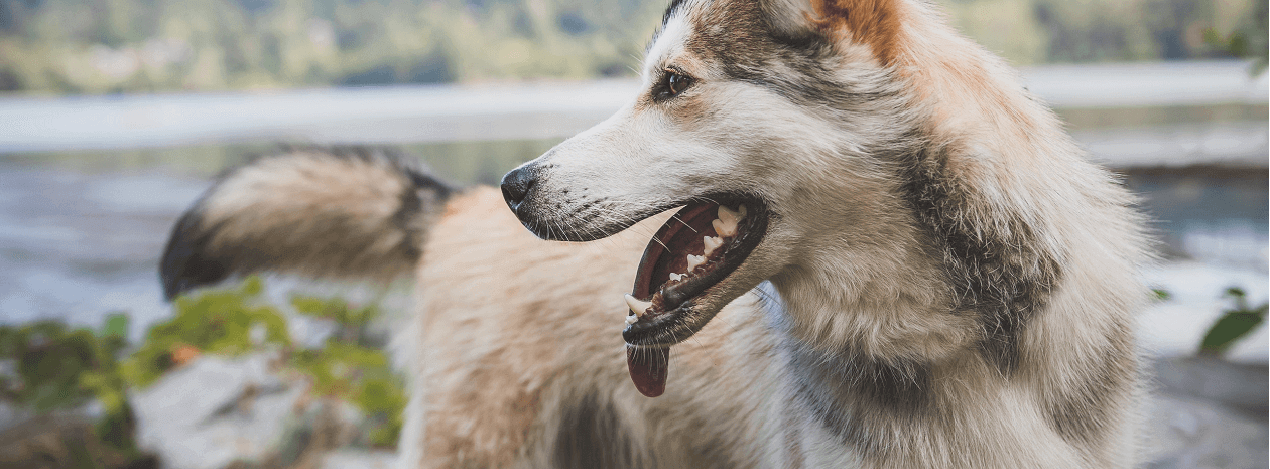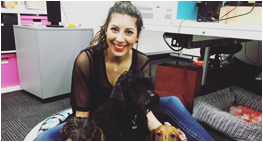Why Do Dogs Hump?
Seeing your dog hump another dog or an inanimate object might be embarrassing for you, but for many dogs it's their favourite pastime. Humping or "mounting" as it is officially known is a common behaviour for our canine companions.
There are a number of reasons why dogs mount and often pet parents assume that it is sexual in nature or as part of a dominance gesture. It is also assumed that the behaviour will cease if the pet is neutered. As you'll discover, this is not always the case! To understand what might be motivating the behaviour in your dog it's important to observe the events surrounding the activity.
The five main motivations for mounting behaviour are:
- Anxiety or Arousal
- Hormonal/Sexual
- Dominance
- Play
- Self-Soothing
1. Anxiety or Arousal

The most common reason for mounting is anxiety or arousal. In these situations, mounting is considered an outlet for the dog's emotional arousal. Dogs may become anxious in novel situations like visiting a new park or when there are visitors to the household. In these cases, dogs may mount the visitor because they are unsure how to interact with them. Dogs may also become anxious in response to a punishment, such as being scolded for getting into the garbage. Dogs may become aroused if an event excites them, like playing with a new toy or people visiting the household. Interestingly, there may actually be an attention-seeking component to the mounting behaviour. For example, mounting the visitor can be an outlet for the dog's excitement, which also draws immediate attention further motivating them to perform the behaviour.
In these situations, the mounting behaviour is a form of displacement behaviour - a behaviour that occurs out of context and in response to an internal emotional conflict.
2. Hormone-Driven

Some cases of mounting behaviour are sexual in nature and driven by hormones such as testosterone. This can affect both male and female dogs and also includes dogs that have been neutered. The sexual performance of neutered dogs is blunted after desexing but does not eliminate sexual motivation. This means that neutered dogs can continue to engage in sexual behaviours and hormones aren't entirely to blame.
3. Dominance

Some dogs will mount to demonstrate their dominant position over another dog. In some cases, two dogs will take it in turns to mount each other while they establish the relationship. Remember, this isn't necessarily a problem if both dogs accept the mounting as normal social behaviour and it doesn't escalate to aggression. If a dog also mounts inanimate objects in addition to other dogs, this doesn't reflect dominance behaviour and another motivation should be sought.
4. Play

Mounting typically starts as play behaviour in young undesexed puppies. It is also normal in the play of older dogs if it's not taken to extremes. Normal play involves stalking, chasing, wrestling and yes, even mounting. Dogs that trust each other and get along will often take turns to mount one another and in this situation it is a sign of a healthy doggie relationship.
5. Self-Soothing

Similar to children sucking their thumb, dogs may mount another pet, person, inanimate object or even the air as a way of self-soothing before they relax and settle.
So what can you do about it?

If your dog is mounting only occasionally, this is essential "normal" dog behaviour and we don't necessarily need to do anything. If your dog is getting themselves into trouble, for example with other dogs at the dog park, or the behaviour is becoming obsessive, these are clear indications for further investigation. Repetitive mounting behaviour has the potential to develop into compulsive behaviour which not only affects quality of life, but can also lead to secondary health problems such as dermatitis.
If mounting is a new behaviour, it's worthwhile consulting your veterinarian to rule out possible physical causes such as urinary tract disease, dermatitis and changes in the hormonal status. Consider making notes or videoing your dog when they perform the behaviour and bring with you in an attempt to determine the motivation. Your veterinarian or veterinary behaviourist can provide techniques to help reduce the behaviour. In some situations, simply understanding why the behaviour is occurring is sufficient for some pet parents as long as the behaviour is intermittent and not harmful.
Once you've discovered your dog's motivation for the mounting behaviour you can implement strategies to reduce it. The first strategy is to practice avoidance. This involves immediately turning away and leaving the environment when your dog starts mounting. This is to ensure that you're not inadvertently encouraging the behaviour. You can also practice avoidance if your dog performs the behaviour with visitors to the household. In this case, prevent direct exposure between your dog and the visitors. This might involve placing your pooch in another room, or keeping them on a lead so you can remain in control until they calm down.
Another technique is called counterconditioning. This technique involves changing your dog's response to the stimulus. For example, if your dog's motivation is other dogs at the dog park, try keeping them on the lead so you can intervene quickly if need be. If they start to mount another dog, you can immediately control them and request another behaviour like "sit". Once they perform this new behaviour it's important to immediately reward them with a treat, a toy, or even verbal reinforcement.
In some cases, neutering may be recommended as a method for reducing mounting behaviour. It's important to note that this isn't a guarantee and it has been reported to only reduce the behaviour by 50% in approximately 70% of dogs.
Remember, the best way to discourage the behaviour is to intervene as soon as it starts. Dogs are creatures of habits and laughing and giving them attention while they do it will only reinforce the behaviour. If you are consistent with training every time your dog mounts then the behaviour will quickly diminish just like your embarrassment.
Dr Kim is one of our resident Pet Circle Veterinarians. When Kim isn't sharing her pet care knowledge at Pet Circle, she enjoys travelling, spending time at the beach, and teaching her Border Collie, Louisiana "Lou" new tricks!
Suggested for you
























